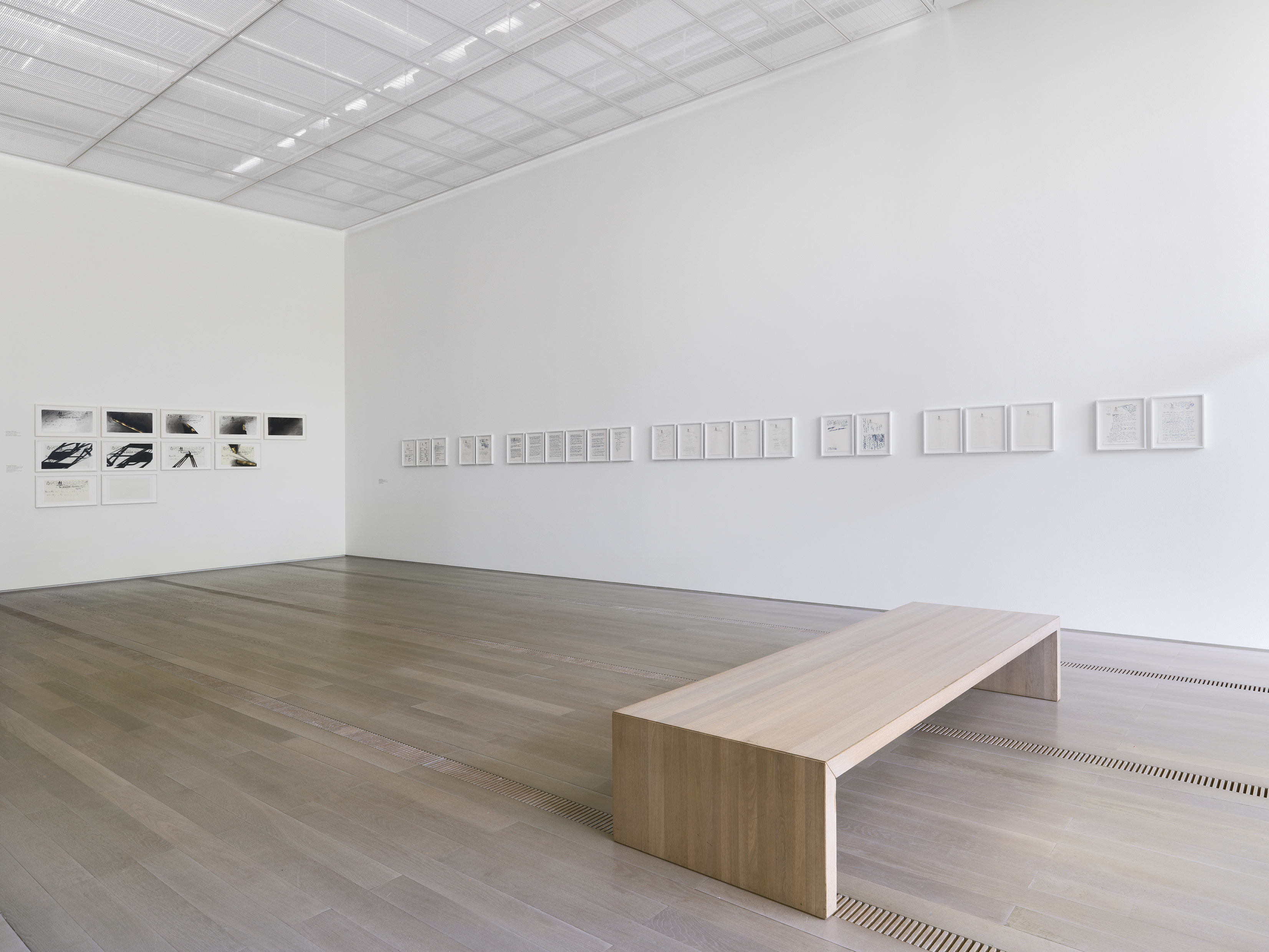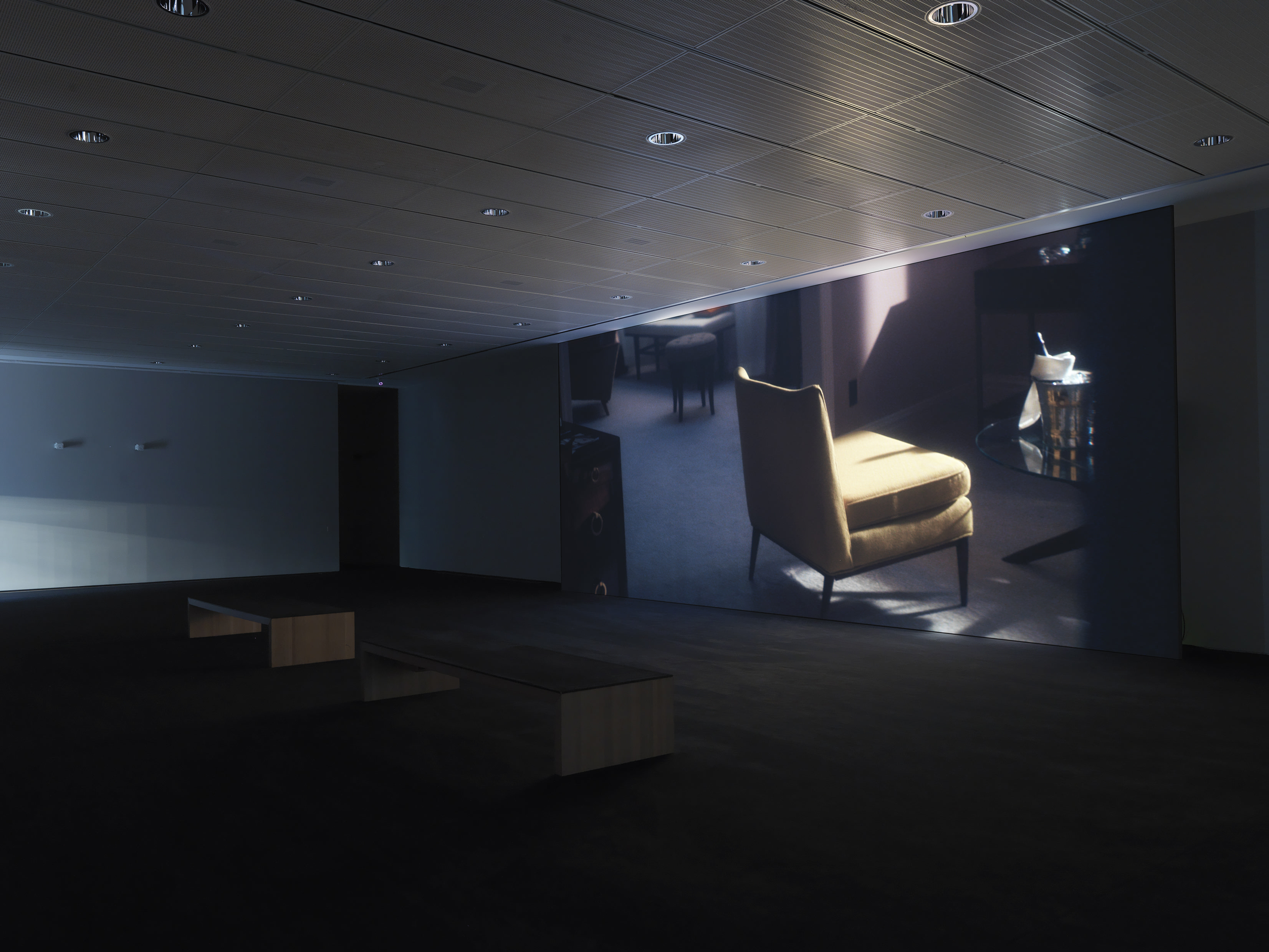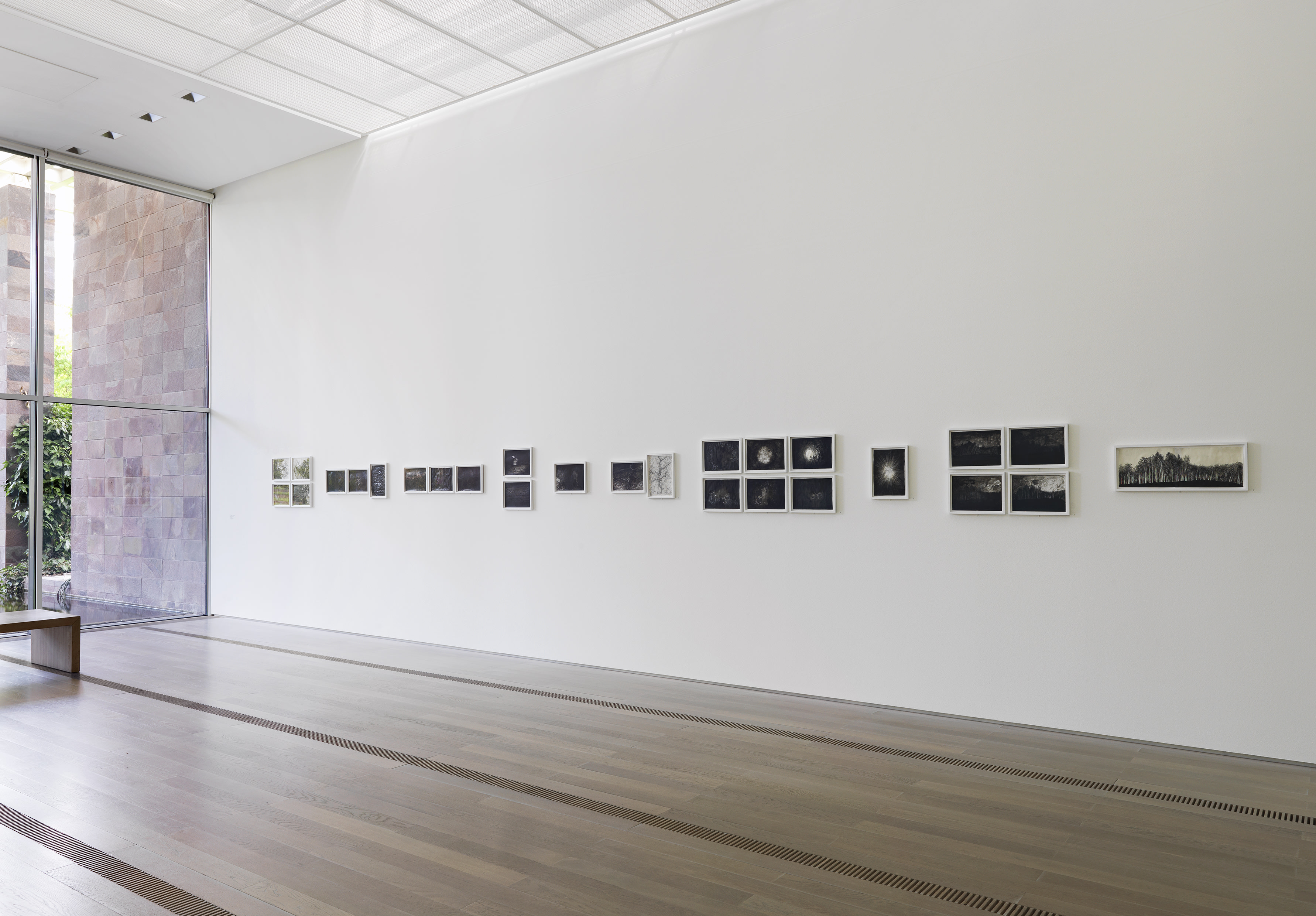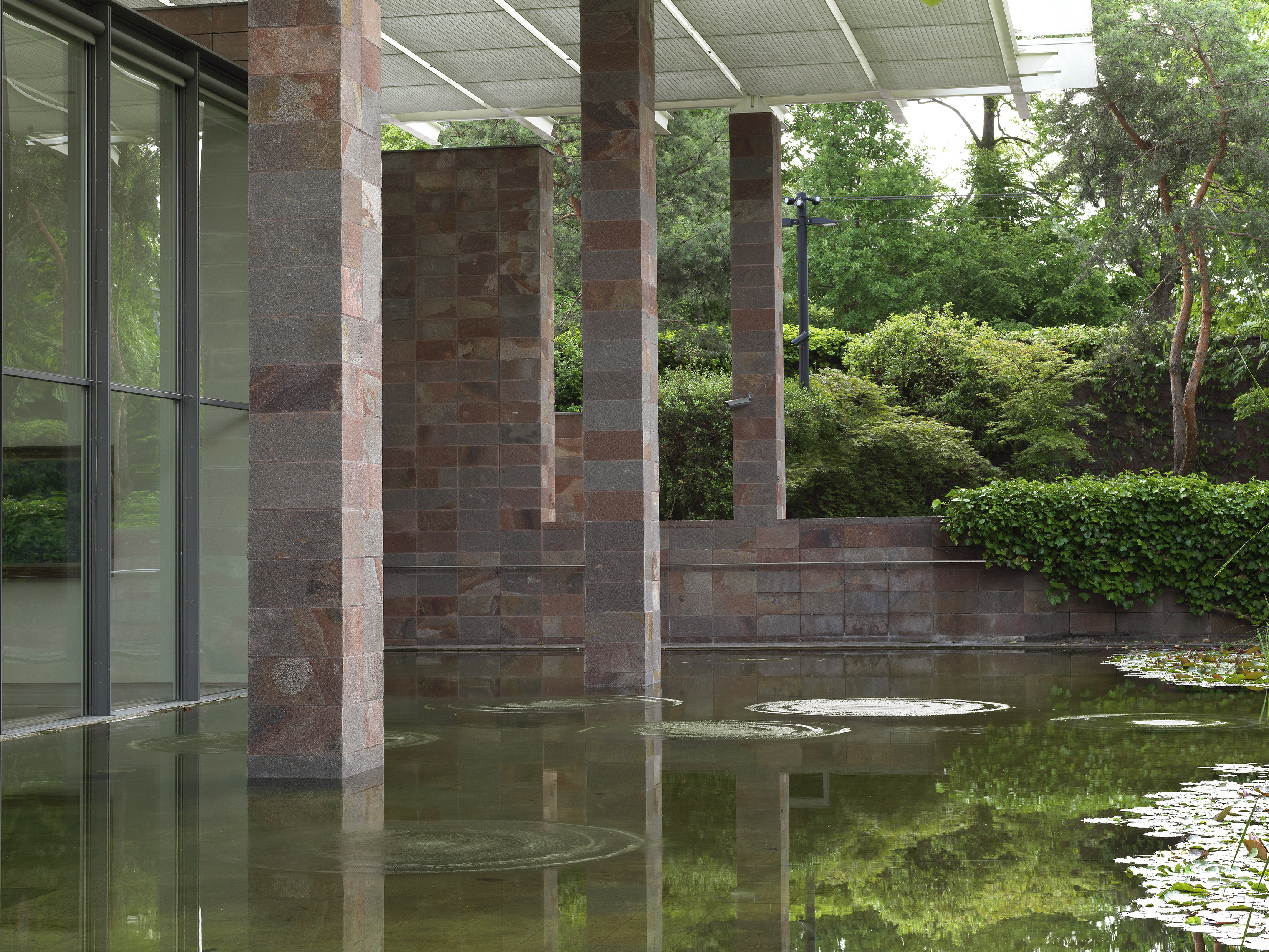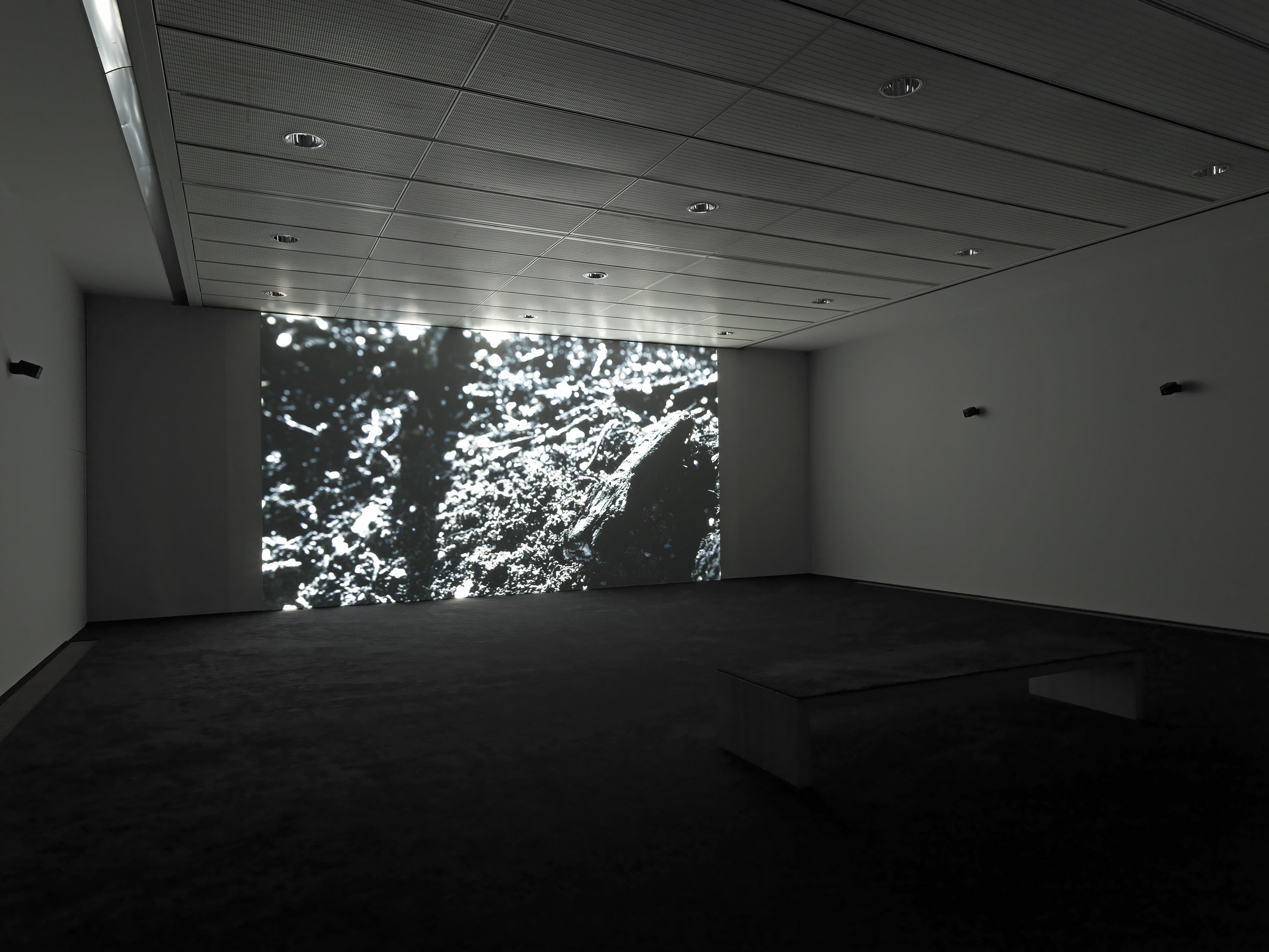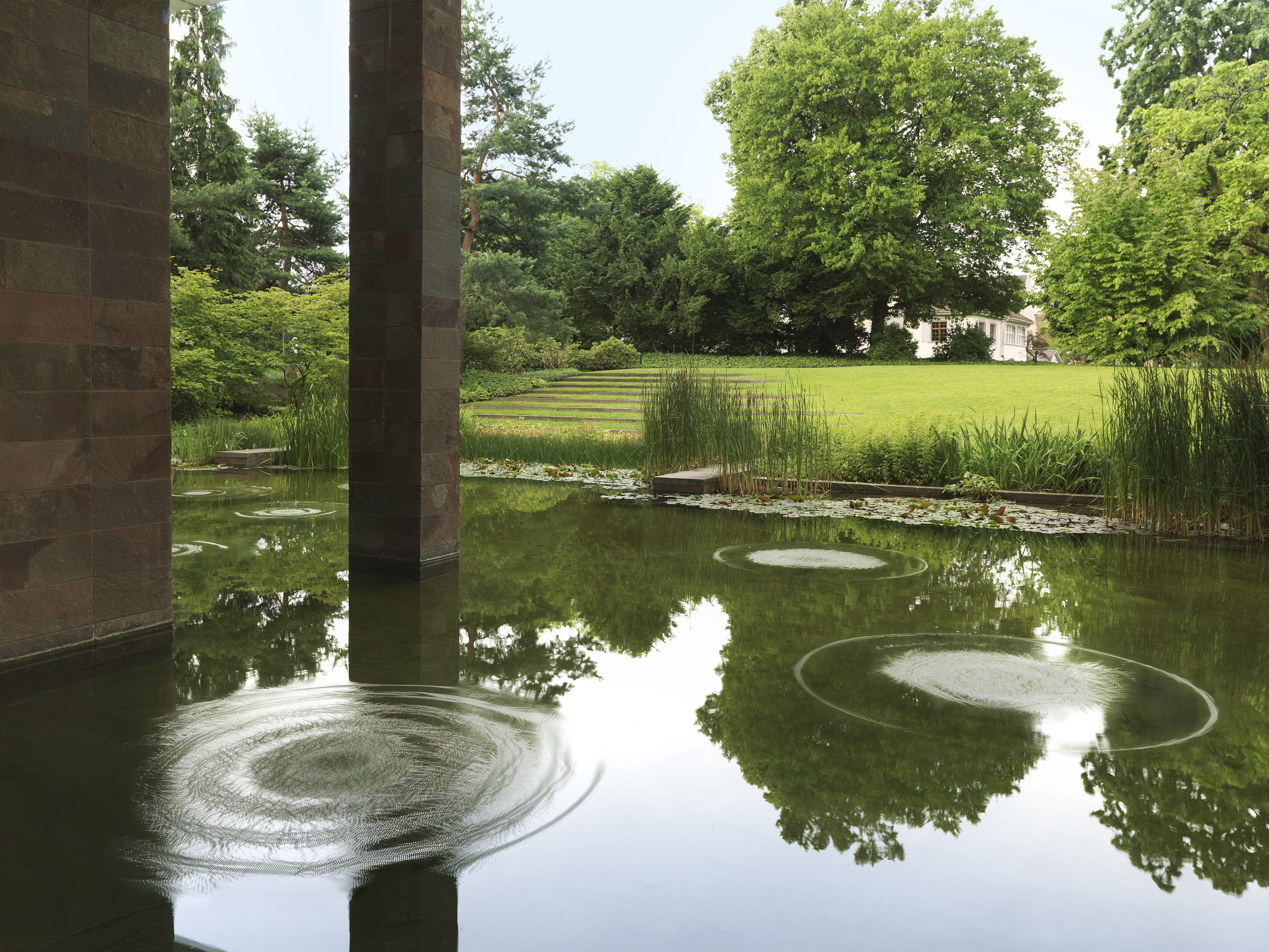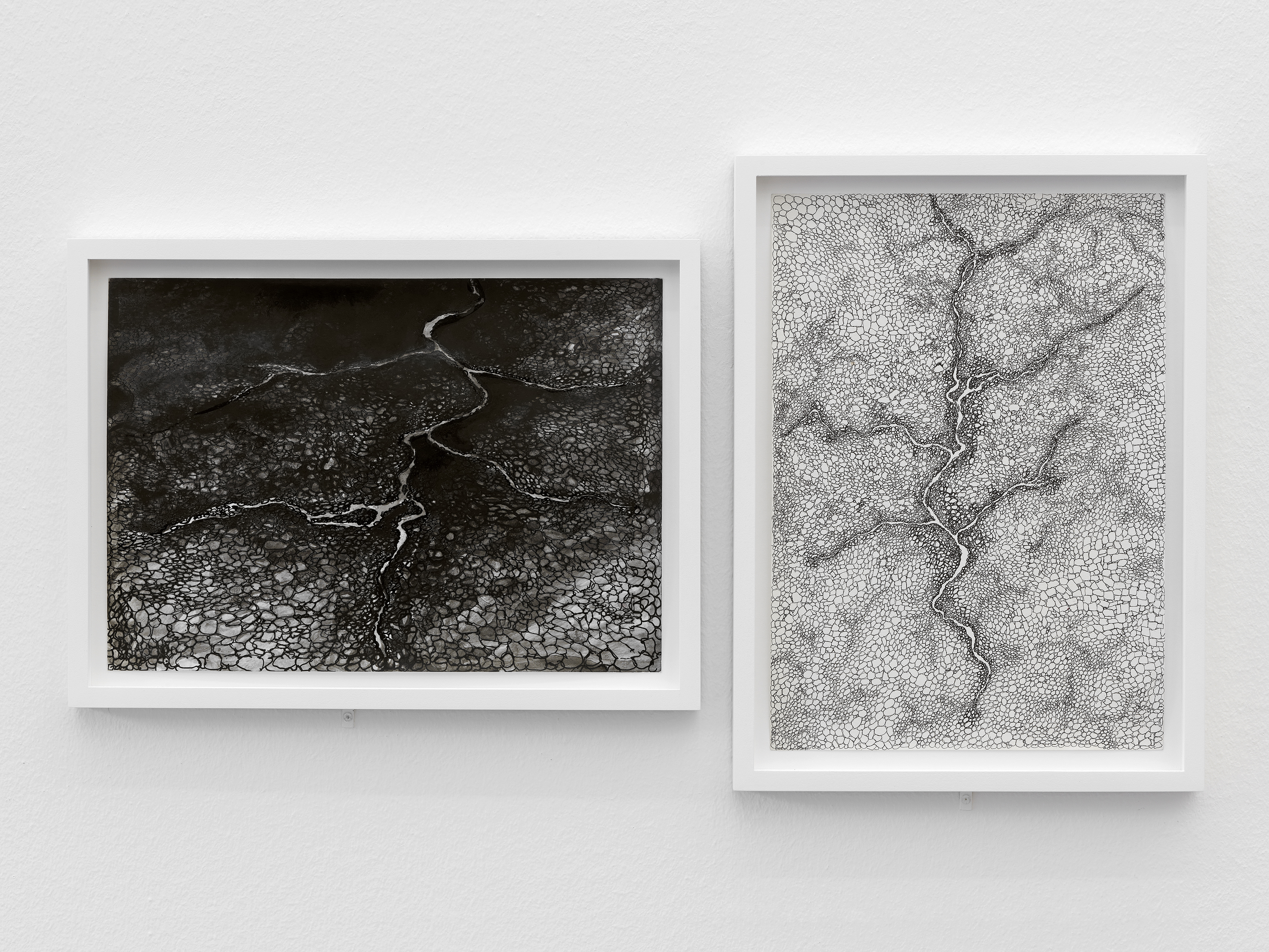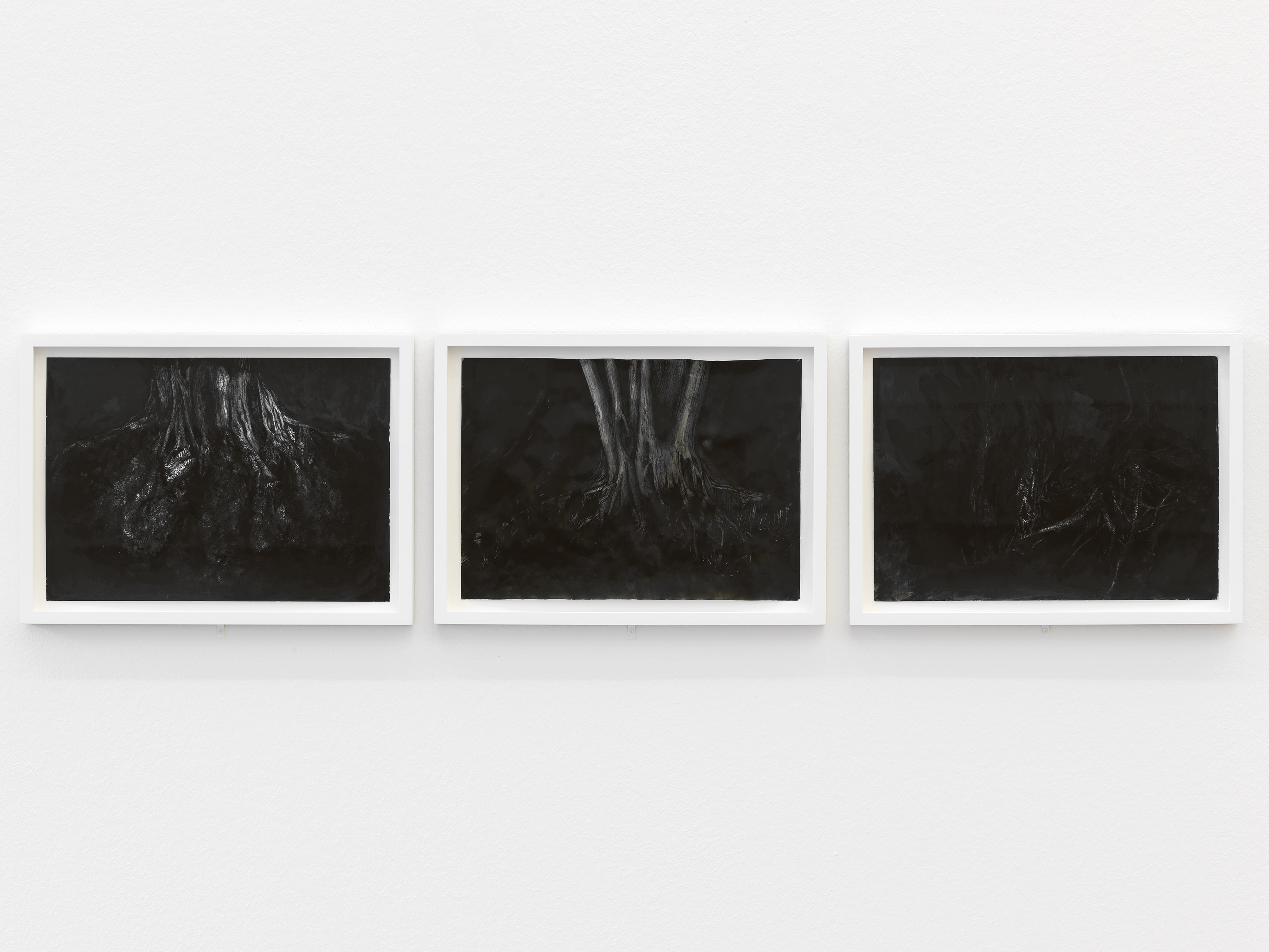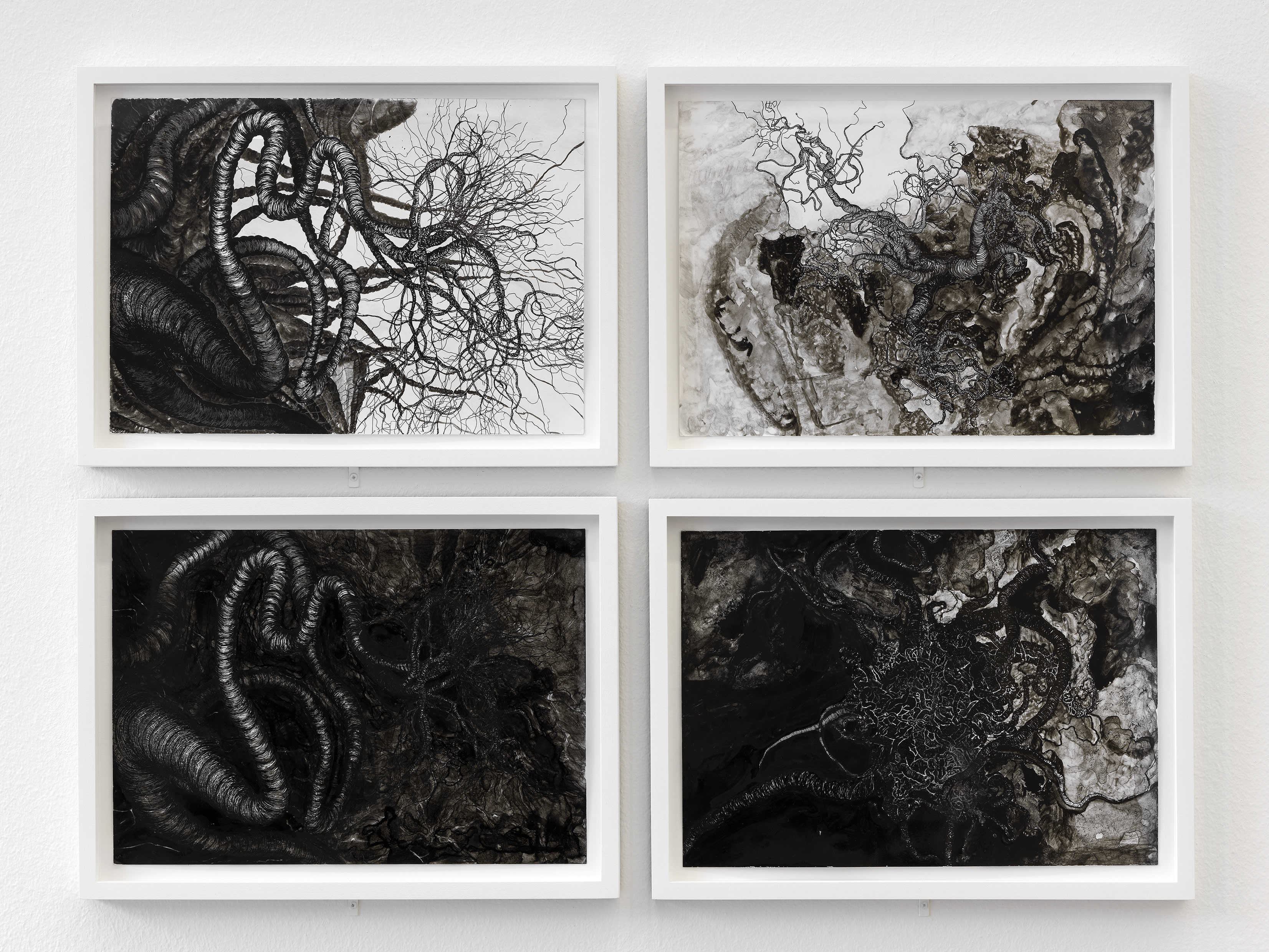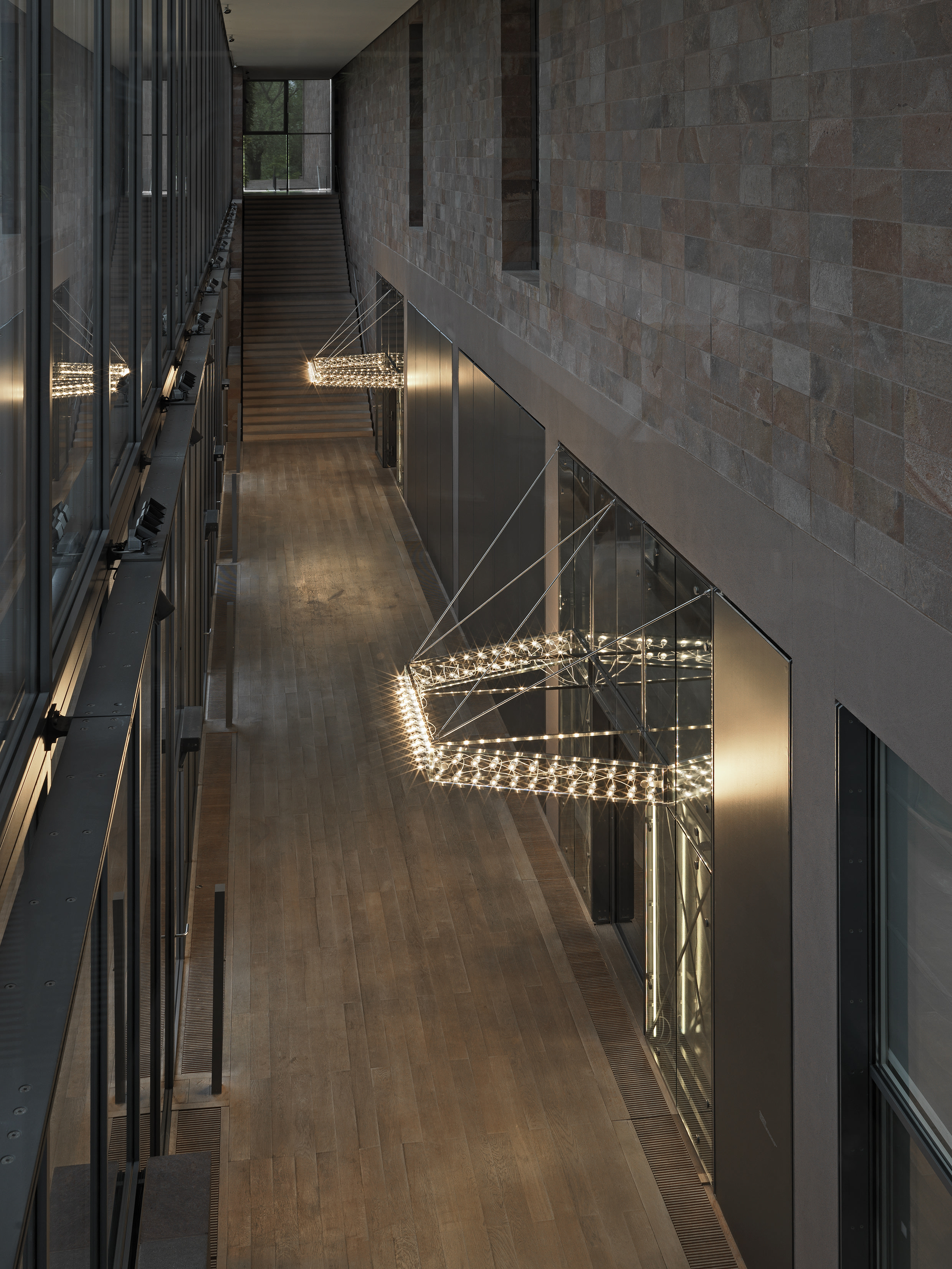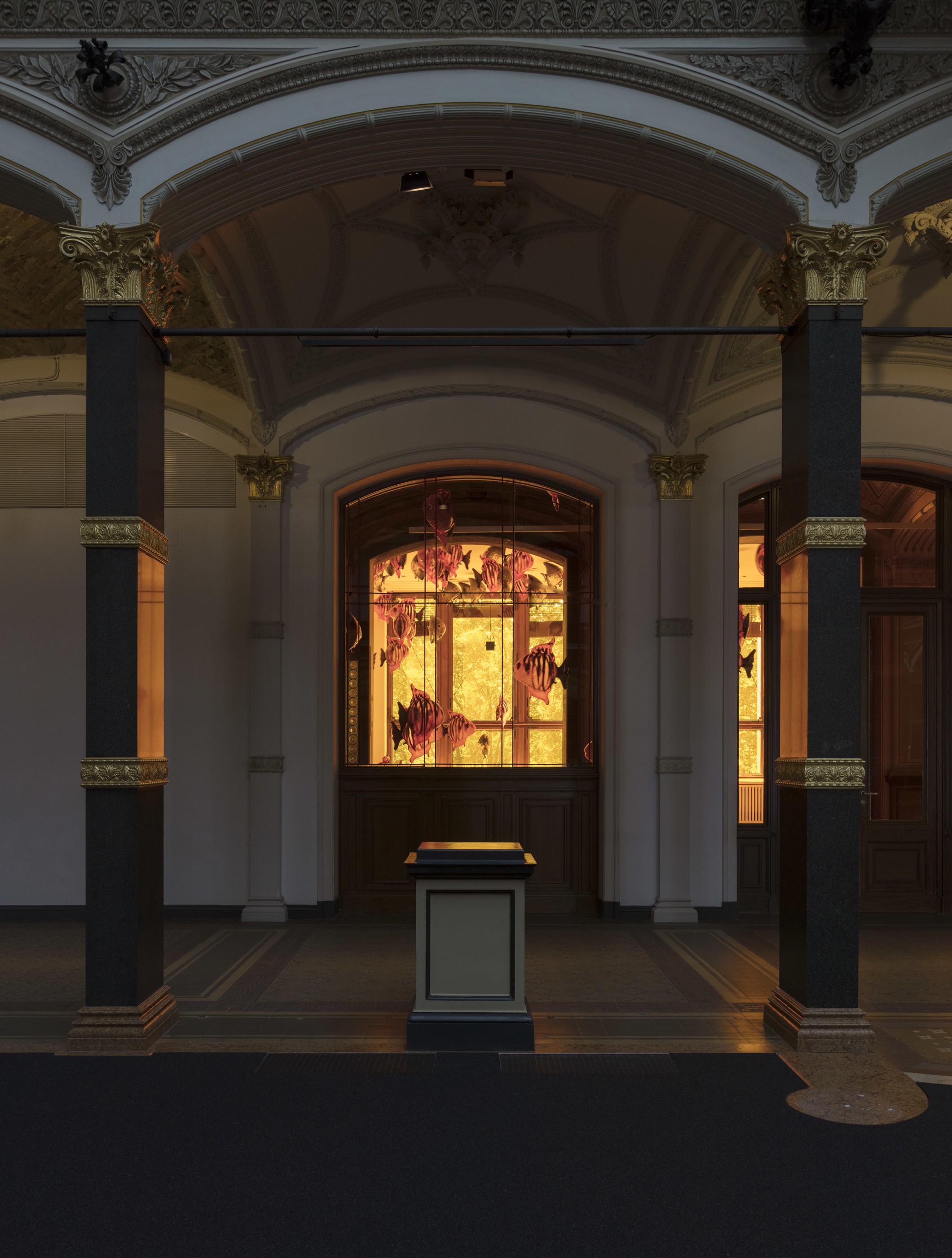Overview
The French artist Philippe Parreno gained notoriety in the 1990s through appreciative reviews for his work, which combines a wide variety of media such as film, sculpture, performance and text. For Parreno, the exhibition itself is also a medium. He redefines the experience of an exhibition by examining its possibilities as a coherent "object" and not as a collection of individual works. On the occasion of his exhibition at the Fondation Beyeler, Parreno is presenting the two new films Marilyn and CHZ as part of a production that guides the visitor through the exhibition area using a choreography of images and sounds.
Both films spread a virus in the Fondation Beyeler. The virus is transmitted to the viewer, but after a while it loses its effect and finally subsides. At the museum entrance, visitors receive a DVD, which means that the exhibition is carried outside the museum space. The DVD contains the two films with a soundtrack by Arto Lindsay. These versions sound different from those of the films shown in the exhibition, just as a memory can deviate from reality. After playing the DVD, the content will delete itself.
Two sound installations give the viewer the impression that the museum is developing a life of its own through Marilyn and CHZ . The first installation extends the film soundtracks from the projection room into the winter garden. The second installation consists of “sound wave water lilies”, which can be seen next to the real water lilies on the pond at the museum entrance and allow the sound of the “plant monster ” from CHZ to escape into the garden.
Two marquees show the entrance to the projection room for the films. These works are reminiscent of the illuminated canopies known from theaters and cinemas. The marquees created especially for the Fondation Beyeler are made of steel, mirrors and light bulbs and look as if they were adding light to the architecture of Renzo Piano.
Installation view “Philippe Parreno” at the Fondation Beyeler, Riehen/Basel, 2012.
Photo: © Serge Hasenböhler

